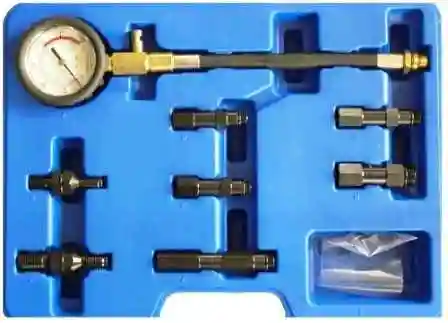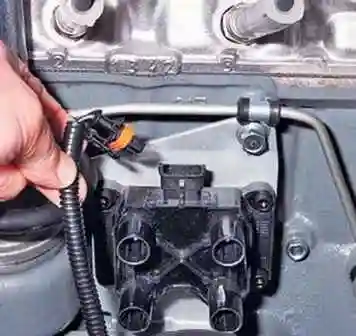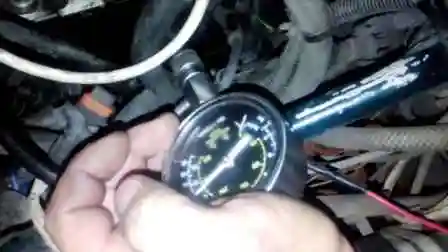To check the compression, it is recommended to use compression testers for gasoline engines such as G-324 from “Triscko” Taiwan or KA-6721K from “KT TOOLS” Taiwan

We install the car on a horizontal platform, brake with a parking brake and warm up the engine
Set the gear lever to neutral, turn off the ignition and open the hood.

Disconnect the plug connector from the ignition module or coil

Remove the wires from the spark plugs and unscrew the candles
Work on measuring compression should be done by two people, turn on the starter with the ignition switch.
Check the compression in the first cylinder.
The check should be carried out with the air and throttle valves fully open

Insert the rubber cone of the compression gauge tip into the threaded hole for the cylinder head spark plug and press down to seal the combustion chamber.
Turning the ignition switch on, turn the engine crankshaft until the pressure gauge pointer stabilizes (from 5 to 7 seconds).

Set the compression gauge to zero by pressing the reset button.
Similarly, check the compression in the second, third and fourth cylinders.
Compression in all engine cylinders must be at least 1.0 MPa (10 kgf/cm²) and must not differ in different cylinders of the same engine by more than 0.1 MPa (1 kgf /cm²).
If the compression reading is too low in one or more cylinders, troubleshoot.
Pour 20 to 25 cm³ of clean engine oil into the reduced compression cylinder to be checked.
Repeat the compression test.
A higher compression reading in this case will indicate broken or stuck piston rings.
If the compression gauge does not change, then the cause of the low pressure is a loose fit of the valves or a damaged cylinder head gasket.
Install the spark plugs and connect the high voltage wires to them.
Close the hood, start the engine and check its operation.





